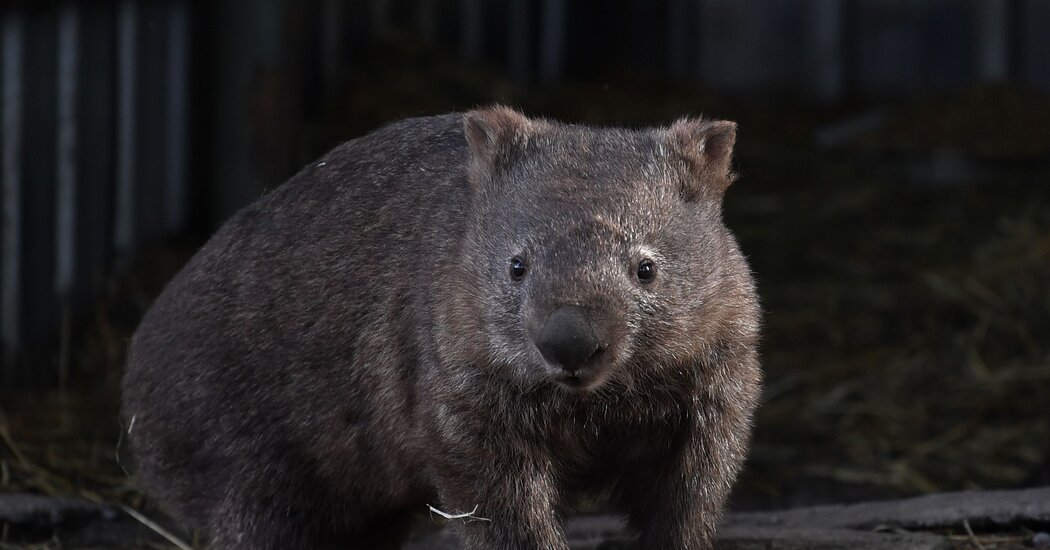It was a tale that seemed too good to be true, and in fact it was: During the devastating 2019-2020 Black Summer wildfires in southeastern Australia, false reports circulated that wombats had protected other animals by herding them into their burrows.
But like any good fairy tale, the reports did contain an inkling of truth; it turns out that wombat burrows do serve as fireproof refuges for small mammals, birds and reptiles during and after extreme fires.
Dale Nimmo, an ecologist at Charles Sturt University in Australia, was asked to fact-check the rumors of hero wombats that spread during the fires.
“In going through the literature,” Dr. Nimmo said, “there was quite a lot of evidence that species other than wombats were regularly using wombat burrows.”
While it turned out that wombats weren’t gallantly ushering woodland creatures out of harm’s way, Dr. Nimmo decided to explore the role of their burrows in forest ecosystems affected by a fire.
His colleague Grant Linley went searching for wombat burrows in Woomargama National Park and Woomargama State Forest. Around 70 of their combined 120 square miles had burned during the 2019-2020 fires. By the time Mr. Linley got there in the summer of 2021, vegetation had already started growing back.
“Historically, these areas are very well adapted to fire,” said Mr. Linley, also a Charles Sturt University ecologist.
Wombat burrows are impressive feats of subterranean infrastructure.
“They have multiple entrances, multiple chambers. They’re wide. They have temperatures that are far below the above ground temperature, so they’re cool when it’s hot,” Dr. Nimmo said.
Wombats can grow to over three feet and weigh close to 90 pounds. They can be territorial and aggressive toward each other, and to other large mammals that they may perceive as a threat. But because wombats aren’t predators, “it’s a little bit safer for other species, small mammals and small lizards and stuff, to co-inhabit with them,” Dr. Nimmo said.
In a paper published last month in the Journal of Mammalogy, the team described how Mr. Linley set up trail cameras at 28 wombat burrows in areas that had experienced varying degrees of wildfire charring, including some that hadn’t been burned at all. The cameras snapped pictures of burrow traffic from June 2021 to April 2022, producing a hearty hundreds of thousands of pictures for Mr. Linley to review.
The pictures revealed that wombat burrows are a hub of animal activity. Fifty-six vertebrate species were observed at the burrows, and several native species were seen more often at the burrows than at nearby sites without burrows, including bush rats and agile antechinus (a carnivorous marsupial related to the Tasmanian devil), the six-foot-long lace monitor lizard and birds like the painted button quail and the gray shrike thrush.
Many species showed a preference for burrows no matter how burned the area was; the bush rats, agile antechinuses and quails were most active around burrows in areas that had been burned heavily. Large marsupials like kangaroos and wallabies tended to avoid burrows, unless they had been flooded with rainwater; then they used them as watering holes.
“What’s really interesting in this study is that interconnection,” said Meg Krawchuk, a fire ecologist at Oregon State University. By burrowing, she said, the wombats provide “value for the broader community. I don’t see that in any of our Fire Ecology 101, and that’s really neat.”
As people think about ways to adapt their own infrastructure to coexist with fire, Dr. Krawchuk thinks there are lessons to be learned from the wombats’ resilient bunkers.
A wombat burrow can last for decades, potentially providing a “multigenerational refuge” for many species, Mr. Linley said. When it comes to all the ways wombats may be providing a benefit to the broader ecosystem around them by digging burrows, Dr. Nimmo said, “I think we’re actually just scratching the surface.”
